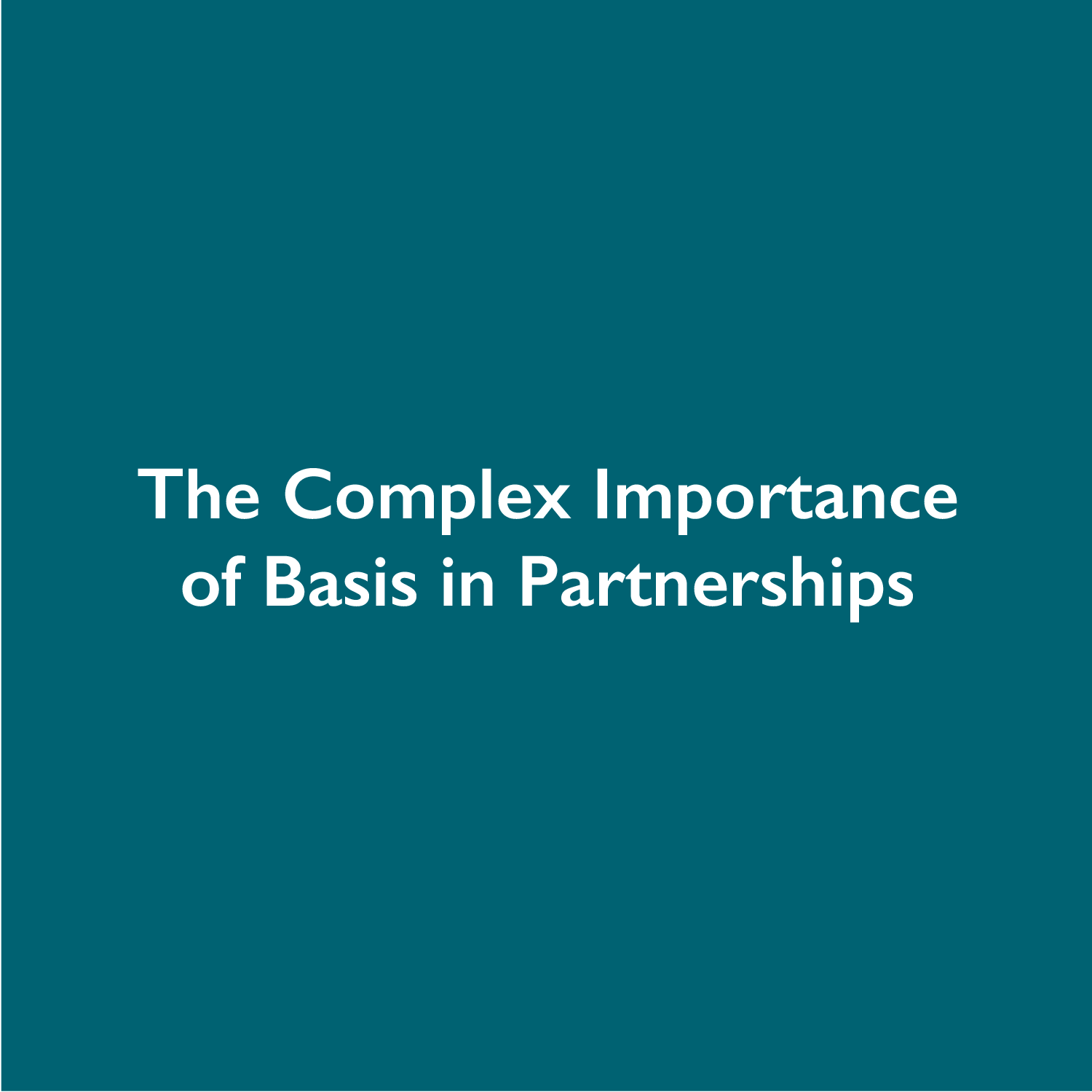by Nicky Lipset, CPA
You may think of basis mainly in terms of selling an interest in stock or selling a house, but there are many implications of basis in diverse transactions. Keeping track of basis, in partnerships specifically, is important as it can create tax implications based on various factors. Below are some examples of situations where basis can change taxable income.
Basis: Ground Rule
Basis in a partnership can determine whether certain transactions between a partner and the partnership are taxable events or whether the partner can take certain deductions.
So what items affect a partner’s basis in the partnership and how?
A partner’s basis is increased if the partner contributes money or property to the partnership and is also increased by the partner’s share of items of income and gain. Debt of the partnership can increase a partner’s basis as well. (Note: The rules related to partnership liabilities are complex and beyond the scope of this article.)
A partner’s basis is decreased by the partner’s items of loss and deductions and by distributions the partner receives from the partnership. A decrease in debt allocated to the partner also reduces a partner’s basis.
Distributions in Excess of Basis
Distributions from a partnership are tax free to partners until they have depleted their basis in the partnership as per Sec. 731(a)(1). In essence, when a partner receives distributions in excess of their basis, the partner is receiving more money from the partnership than they put into it or had allocated to them in earnings. Although it may not seem possible, the most common way this occurs is when the partnership takes on debt. The partnership’s debt can also create basis for the partner, which allows for further tax-free distributions. Debt only creates basis temporarily. It increases basis when the debt is incurred and it decreases basis when it is paid off. The distributions from the partnership remain tax-free as long as there is enough debt allocated to create basis to the partner taking the distributions. Once all basis is depleted, including basis from debt, or the debt is repaid, any distributions in excess of basis are taxed as capital gains (long term or short term based on how long the interest in the partnership has been held) to the partner receiving them.
At Risk Limitations
The limitations created by IRC Section 465 are another important reason to track basis in partnerships. Section 465 limitations are also known as the at-risk limitations. Section 465 limits a partner’s losses to the amount of their investment that is at risk. What this means is that a partner cannot take losses if they have nothing to lose. The at-risk limitations are more restrictive than the rules regarding distributions in excess of basis.
Basis for the purposes of applying at-risk limitations is adjusted by income, deductions, contributions and distributions only. Unlike the provision on distributions in excess of basis, basis under the at-risk limitations only includes debt if it is either qualified nonrecourse debt or if the debt is recourse debt and the partner is personally liable for this debt, as is the case for general partners. Thus, if a partner has a negative tax basis and only nonrecourse debt that is not qualified, then their losses and deductions may be limited. Any losses that are limited are suspended and carried forward to a future year when there is enough basis for the losses to be released as an offset to taxable income.
Current Developments
Basis calculations are even more important now, than they have been up until now as the IRS recently changed the rules on reporting basis to partners. Under the new rules, each year partnerships must send partners a Schedule K-1 that reports the partner’s share of that year’s activities. The Schedule K-1 includes Section L, which reports the partner’s basis. Starting with the 2019 tax year, the IRS changed the rules regarding how partnerships report the partner’s basis and now partnerships are required to report the partner’s tax basis in Section L on a partner’s Schedule K-1, rather than having the option to report a basis other than a tax basis. In prior years the partnership was allowed to report basis on the K-1 that was based on GAAP, Section 704(b) Book or Other basis.
Due to the short notice of this change, and the potential difficulty for the partnership in procuring this information, tax professionals have successfully lobbied the IRS to delay implementing this reporting requirement for one year to the tax year beginning on January 1, 2020. Prudent partnership tax managers should perform the calculations now if they historically reported on a basis other than tax basis, in order to prepare for this new reporting requirement, which goes into effect for tax years ending on or after December 31, 2020 per IRS Notice 2019-66.
____________________________________
We highly recommend you confer with your Miller Kaplan advisor to understand your specific situation and how this may impact you.



